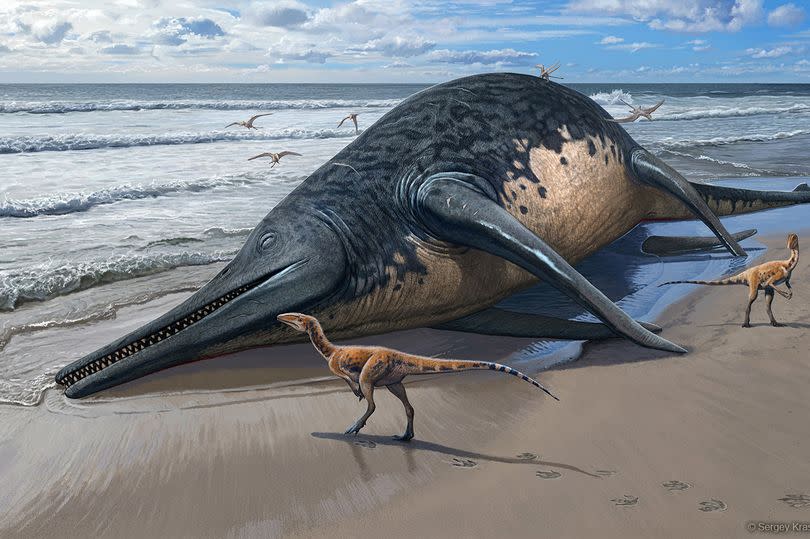Eleven-year-old fossil hunter finds bone from largest-ever sea reptile

A fossil find by an young girl has led to the discovery of what may have been the world's largest-ever sea reptile. Ruby Reynolds, then 11, and her father Justin uncovered the first pieces of the giant creature's jaw on a beach in May 2020.
It was followed by the discovery of the fossilised remains of a second jaw bone, measuring more than two metres long. That allowed experts from the University of Manchester to piece together the multi-million year-old jigsaw and identify a gigantic new species of sea monster.
They estimate the ichthyosaur would have been more than 25m long, around the size of a blue whale, making it possibly the largest marine reptile ever recorded. It lived around 200 millions years ago during the Triassic Period when ichthyosaurs swam the seas while the dinosaurs walked on land .
READ MORE:
Ruby, who found the fossil on the beach at Blue Anchor, Somerset, said: "It was so cool to discover part of this gigantic ichthyosaur. I am very proud to have played a part in a scientific discovery like this."
Mr Reynolds added: "When Ruby and I found the first two pieces we were very excited as we realised that this was something important and unusual."
After making the discovery they contacted Dr Dean Lomax, a palaeontologist at The University of Manchester, who then got in touch with Paul de la Salle, a fossil collector who had found the first giant jawbone in May 2016 further along the coast at Lilstock.

The team have called the new creature Ichthyotitan severnensis, meaning 'giant fish lizard of the Severn'.
Dr Lomax said: "It is quite remarkable to think that gigantic, blue whale-sized ichthyosaurs were swimming in the oceans around what was the UK during the Triassic Period. These jawbones provide tantalising evidence that perhaps one day a complete skull or skeleton of one of these giants might be found. You never know."
The fossils will soon go on display at the Bristol Museum and Art Gallery.

 Yahoo News
Yahoo News 
